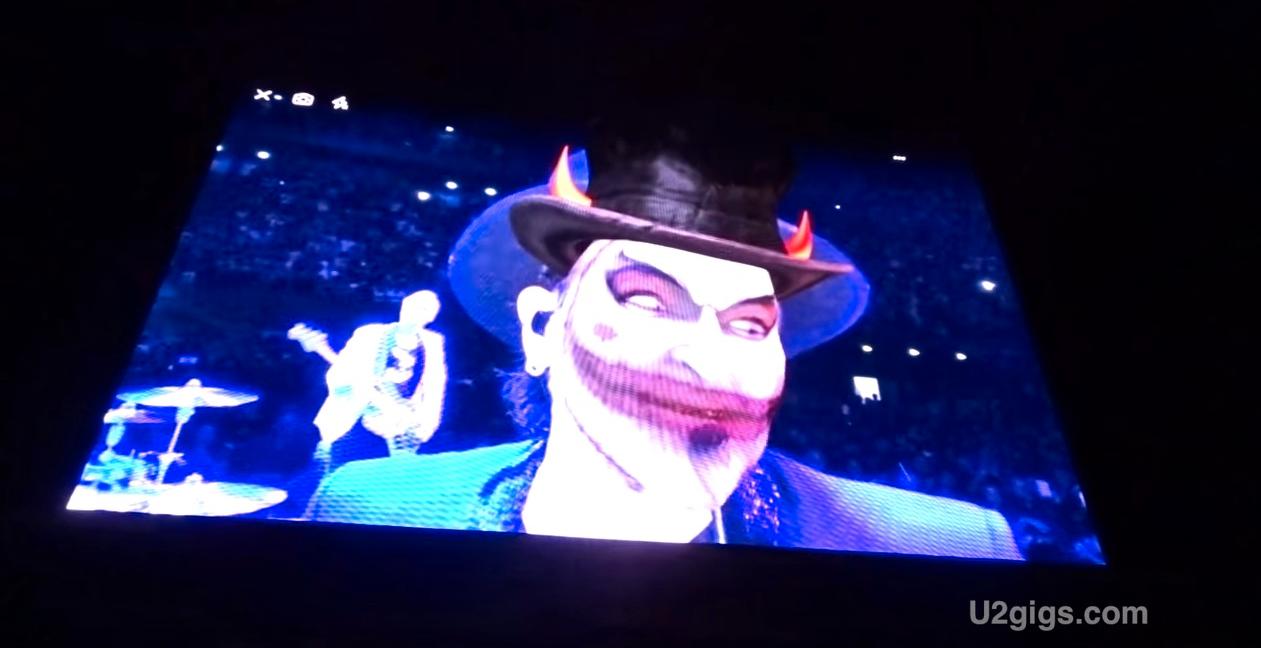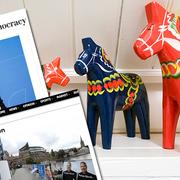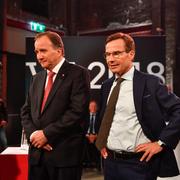bakgrund
Mer om Bonos karaktär MacPhisto
Wikipedia (en)
The Zoo TV Tour (also written as ZooTV, ZOO TV or ZOOTV) was a worldwide concert tour by rock band U2. Staged in support of their 1991 album Achtung Baby, the tour visited arenas and stadiums from 1992 to 1993. To mirror the new musical direction that the group took with Achtung Baby, the tour was intended to deviate from their past and confound expectations of the band. In contrast to U2's austere stage setups from previous tours, the Zoo TV Tour was an elaborately staged multimedia event. It satirised television and media oversaturation by attempting to instill "sensory overload" in its audience. To escape their reputation for being earnest and overly serious, U2 embraced a more lighthearted and self-deprecating image on tour. Zoo TV and Achtung Baby were central to the group's 1990s reinvention.
The tour's concept was inspired by disparate television programming, coverage of the Gulf War, the desensitising effect of mass media, and "morning zoo" radio shows. The stage featured dozens of large video screens that showed visual effects, video clips, and flashing text phrases, along with a lighting system partially made of Trabant automobiles. Channel surfing, prank calls, video confessionals, a belly dancer, and live satellite link-ups to war-torn Sarajevo were incorporated into the shows. On stage, Bono portrayed several characters he conceived, including the leather-clad egomaniac "The Fly", the greedy televangelist "Mirror Ball Man", and the devilish "MacPhisto". In contrast to other U2 tours, each of the Zoo TV shows opened with six to eight consecutive new songs before older material was played.
Comprising five legs and 157 shows, the tour began in Lakeland, Florida, on 29 February 1992 and ended in Tokyo, Japan, on 10 December 1993. The first four legs alternated between North America and Europe, before the final leg visited Australasia and Japan. After two arena legs, the show's production was expanded for stadiums for the final three legs, which were branded "Outside Broadcast", "Zooropa", and "Zoomerang/New Zooland", respectively. Although the tour provoked a range of reactions from music critics, it was generally well received. Along with being the highest-grossing North American tour of 1992, Zoo TV sold around 5.3 million tickets over its five legs. The band's 1993 album Zooropa, which expanded on Zoo TV's mass media themes, was recorded during a break in the tour, and its songs were played in 1993. The tour was depicted in the Grammy Award–winning 1994 concert film Zoo TV: Live from Sydney. Critics regard the Zoo TV Tour as one of rock's most memorable tours—in 2002, Q's Tom Doyle called it "the most spectacular rock tour staged by any band".




